Text

The Napaljarri-warnu Jukurrpa (Seven Sisters Dreaming) depicts the story of the seven ancestral Napaljarri sisters who are found in the night sky today in the cluster of seven stars in the constellation Taurus, more commonly known as Pleiades. The Pleiades are seven women of the Napaljarri skin group and are often depicted in the paintings of this Jukurrpa carrying the Jampijinpa man 'Wardilyka' (the bush turkey) who is in love with the Napaljarri-warnu and who represents the Orion's Belt cluster of stars. Jukurra-jukurra, the morning star, is a Jakamarra man who is also in love with the seven Napaljarri sisters and is often shown chasing them across the night sky. In a final attempt to escape from the Jakamarra, the Napaljarri-warnu turned themselves into fire and ascended to the heavens to become stars.
0 notes
Text
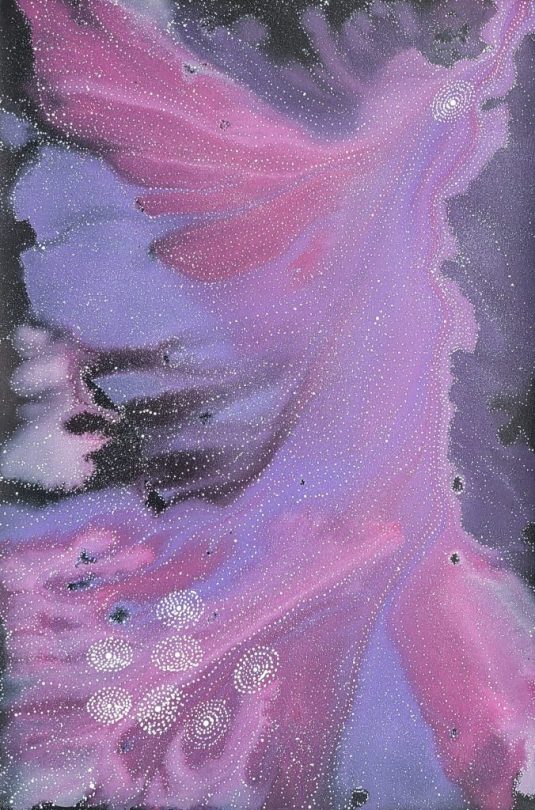
Seven Sisters Dreaming - Athena Granites Nangala Athena Granites Nangala paints a very modern version of the Seven Sisters Dreaming having grown up seeing her mother, sisters and grandmother (the late, world renowned artist Alma Granites Nungurrayi) as they would paint the stories of their country around Yuendumu, to the north west of Alice Springs in the southern Tanami region.
2 notes
·
View notes
Photo





Dianne Fogwell’s multi-panelled installation, Prescience, presents a panoramic view of the Australian landscape, highlighting both its beauty and its precarity due to climate change.
Through fifty-six exquisitely detailed hand-printed panels, Fogwell creates an immersive experience of the bush, emphasising the interconnectedness of the natural world, humanity’s central role in its destruction, and the cycle of regeneration that follows natural disasters such as fire. The installation is accompanied by a musical composition by Reuben Lewis taking inspiration from the choreography and sounds of the natural world.
Prescience is a panoramic view of the beauty of the Australian landscape - its cycles of regeneration that follow natural disasters such as fire, and its precarity due to climate change. Across fifty-six exquisitely detailed hand-printed labels. Fogwell has created for the viewer an immersive experience of the bush to emphasize our interconnectedness with the natural world and humanity's central role in its exploitation and destruction.
The word 'prescience' - and the underlying tenor of Fogwell's work- suggests an awareness and acknowledgement of imminent threat. Fogwell draws on a quote by Italian artist, engineer, scientist and architect Leonardo da Vinci (1452-1519) who stated: 'in nature there is no effect without a cause ... Science is he observation of things possible, whether present or past; prescience is the knowledge of things which may come to pass.'
In our contemporary context - the age of the Anthropocence - Fogwell's installation highlights the impacts of climate change on flora and fauna, and subtly critiques humankind's limited commitments to address the climate crises. A rich narrative unfurls across the panels: the imagery traverses diverse geographies and ecologies, distinctly conditioned by natural occurrences such as dust storms, fire, and regrowth.
Fogwell's unique-state colour linocut and woodcut is extraordinary for its technical brilliance and conceptual richness. The expansive, luminous landscape is printed in multiple layers from many blocks impressed on fine Hanji paper (handmade in Korea from the inner bark of the Mulberry tree): the scenery composed from the artist's extensive stock of lino and wood blocks and images. The work floats suspended off the wall: in the artist's hands, the diaphanous, seemingly fragile paper is a metaphor for the precarity of the natural world, whilst simultaneously a call to protect and care for our vulnerable flora and fauna.
As Fogwell recently stated: 'There is a great collective sadness in losing the idea of the Australian bush as 'eternal' or 'invincible', but there is always hope: for with our considered help there can be regeneration of both place and spirit.
The installation is accompanied by a music composition by Reuben Lewis taking inspiration from the sounds and wonderful cacophonies of the natural world - an aural complement to an immersive visual landscape.
1 note
·
View note
Photo
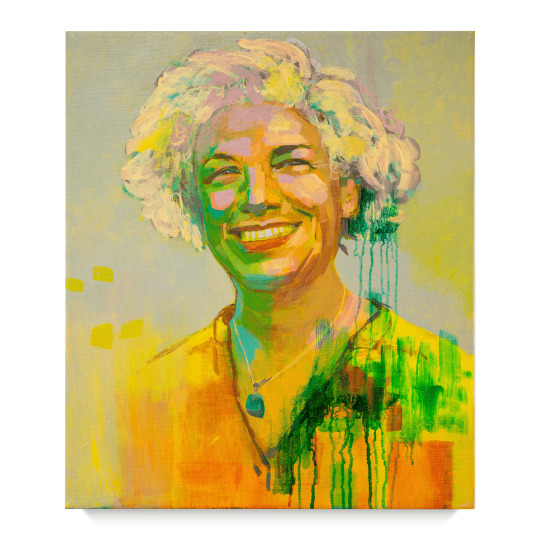
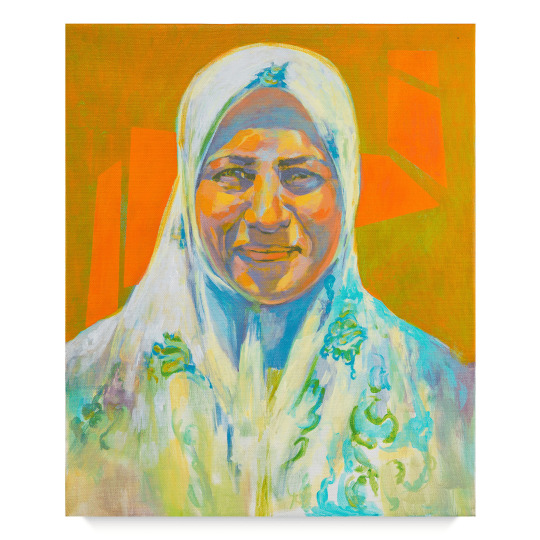
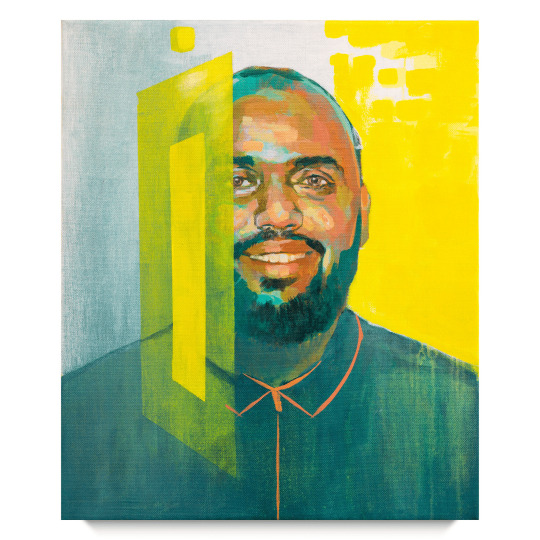
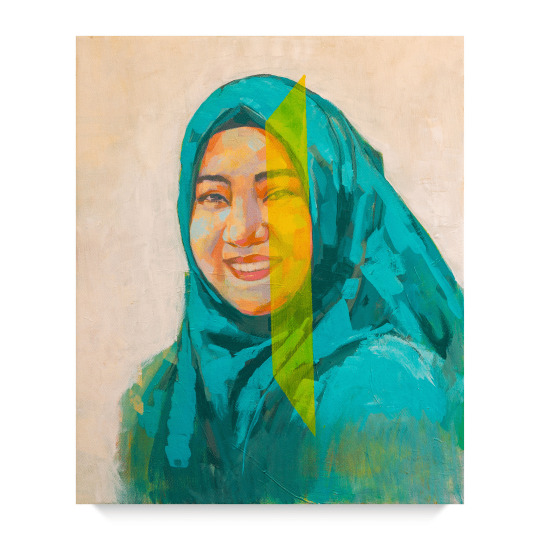
Tamirat Gebremariam was an Ethiopian-Australian contemporary artist who lived and worked in Melbourne. He graduated from the Victorian College of the Arts with a Masters of Fine Art in 2012. His oeuvre explored portraiture informed by his own migrant experience, bringing light and strength to the stories of Australians from all walks of life. Artists including Frank Gehry, Neo Rauch and Julie Mehretu greatly influenced his work.
Tamirat received multiple accolades for his artistic achievements. These included the National Gallery of Victoria’s post-graduate encouragement award (2009), the Sydney Opera House’s 100 Most Influential African-Australians of the Year (2012), and Parliament of Victoria’s Celebration of African-Australians Excellence of the Year Award (2014). Curated by the Islamic Museum of Australia, Missing Voices presents these testimonies through painting, illustration, video, photography and text with portraits by Tamirat Gebremariam. Zahidah 2020 ♦ Ikram 2020 ♦ Mukhtar 2020 ♦ Abida 2020
0 notes
Photo
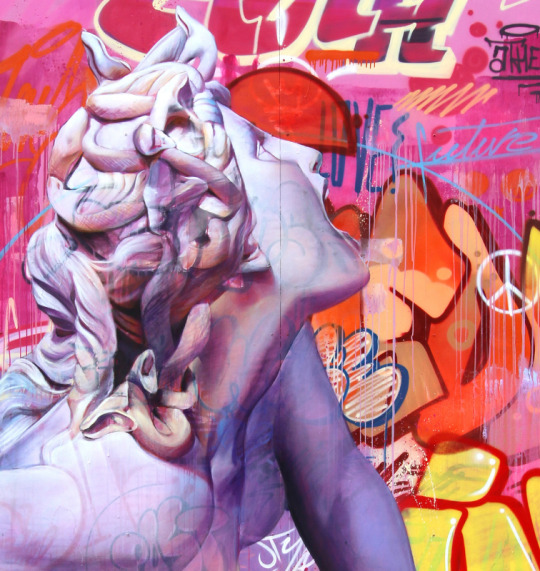
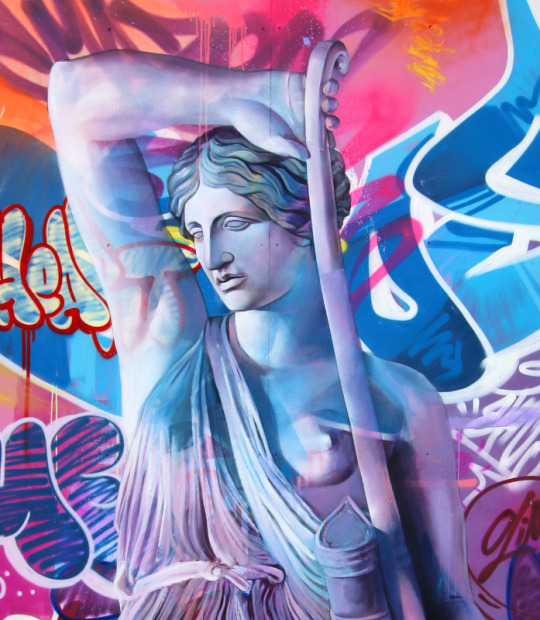
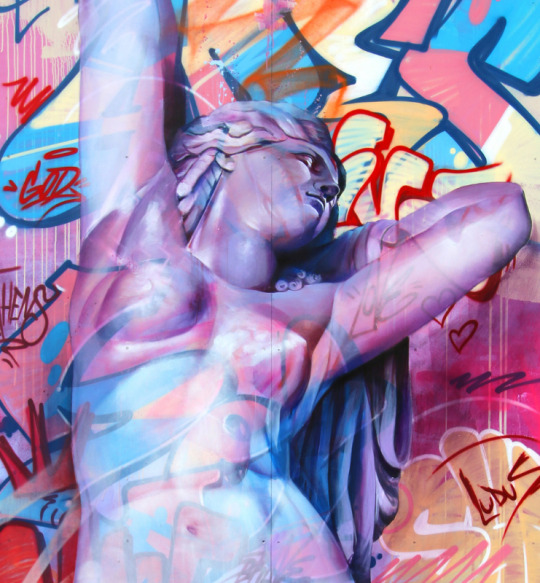
RENEGADES was an exciting commission with renowned Spanish urban artists PichiAvo. The commission consisted of three outdoor, free-standing portraits, each depicting a woman from ancient Greek history or mythology. RENEGADES pays homage to three women who were, in their own way, renegades. Women who broke away from the traditional roles associated with women of the time and made an indelible mark on history.
MEDUSA The Gorgon With her serpent hair, Medusa is an instantly recognisable figure. Possibly one of the most maligned characters in Greek mythology, a close look at her story reveals a nuanced and complex character who suffered at the hands of both men and women and ultimately became the archetypal femme fatale.
HIPPOLYTA The Amazon Long believed to be a myth, Amazons were a tribe of warrior women who were the archenemies of the ancient Greeks. Ancient accounts describe them as fierce and fearless in battle, a stark contrast to the cloistered and dependent Greek women. Hippolyta, an Amazonian queen, figures predominantly in the stories of Herakles and Theseus, both of which end with her death.
PHRYNE The Courtesan Phryne, an Athenian courtesan notable for her intelligence and wit was a desired and sought after companion amongst some of the most fêted intellects of all time. A self-made woman, she became so rich that she offered to pay for the rebuilding of the walls of Thebes, which were destroyed by Alexander the Great in 335 BCE. The city patriarchs refused her offer, leaving the walls in ruins.
2 notes
·
View notes
Photo



“[Kate] Beynon retrieves signs and symbols from history, thereby rejoicing in ambiguous cultural origins. She avoids rigid ethnic boundaries and stereotypes in favour of a celebratory melange of identities and physical attributes. Amidst her distinctive identity politics, she blends personal and ancestral influences in a semi-autobiographical way.” - Natalie King, 2008
Room of Lucky Charms, 2017 ♦ Robe for the Blue Shaman Guardian (front), 2020 ♦ Supernatural anatomical-botanical re-mixt 1-9, 2018
0 notes
Photo


Kate Beynon’s familial ancestry is the bedrock of her artistic engagement and the resulting artworks are a nexus of influences. Informed by a diverse range of pictorial traditions including Eastern and Western comic books, animation, film, graffiti, calligraphy and fashion, Beynon’s paintings manifest the hybrid reality of today’s multicultural global citizen.
Demi-Ghost guardian with tangerine and kindred spirits, 2018 ♦ Hybrid self with kindred spirits, 2019
0 notes
Photo





Kate Beynon (born 9 September 1970, in Hong Kong) is an Australian contemporary artist based in Melbourne. Her work addresses ideas of transcultural life, feminism, and notions of hybridity in today’s world. She is known for her depictions of the Chinese heroine Li Ji, who is situated in a modern context. Through Li Ji, Beynon explores a hybrid Australian existence and a sense of belonging within a mixed and multi-layered identity. Collaborative Spirits, 2021 ♦ Studio Self in Blue Shaman Helmet, 2022 ♦ Vision of the Multicoloured Phoenix, 2007 ♦ Acrobats of the Dragon boat tail, 2014–2015 ♦ Masks of the Ogre dancers, 2014–2015
0 notes